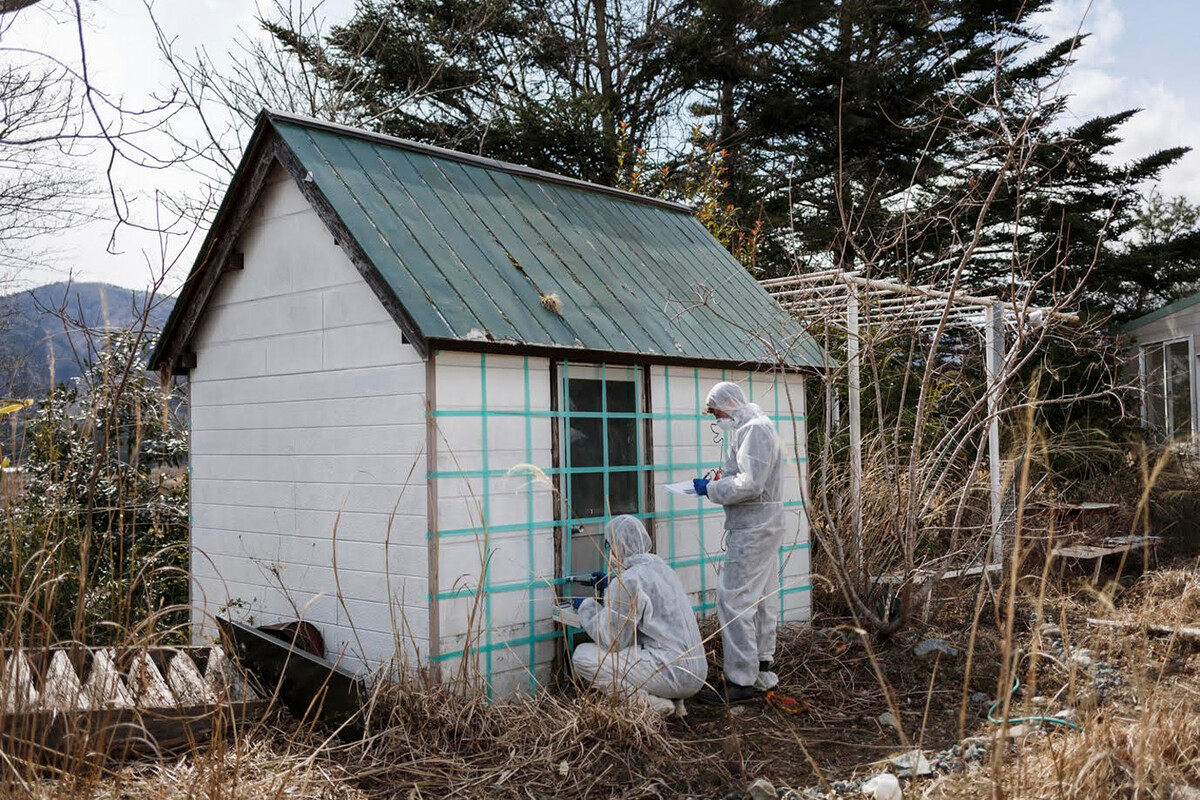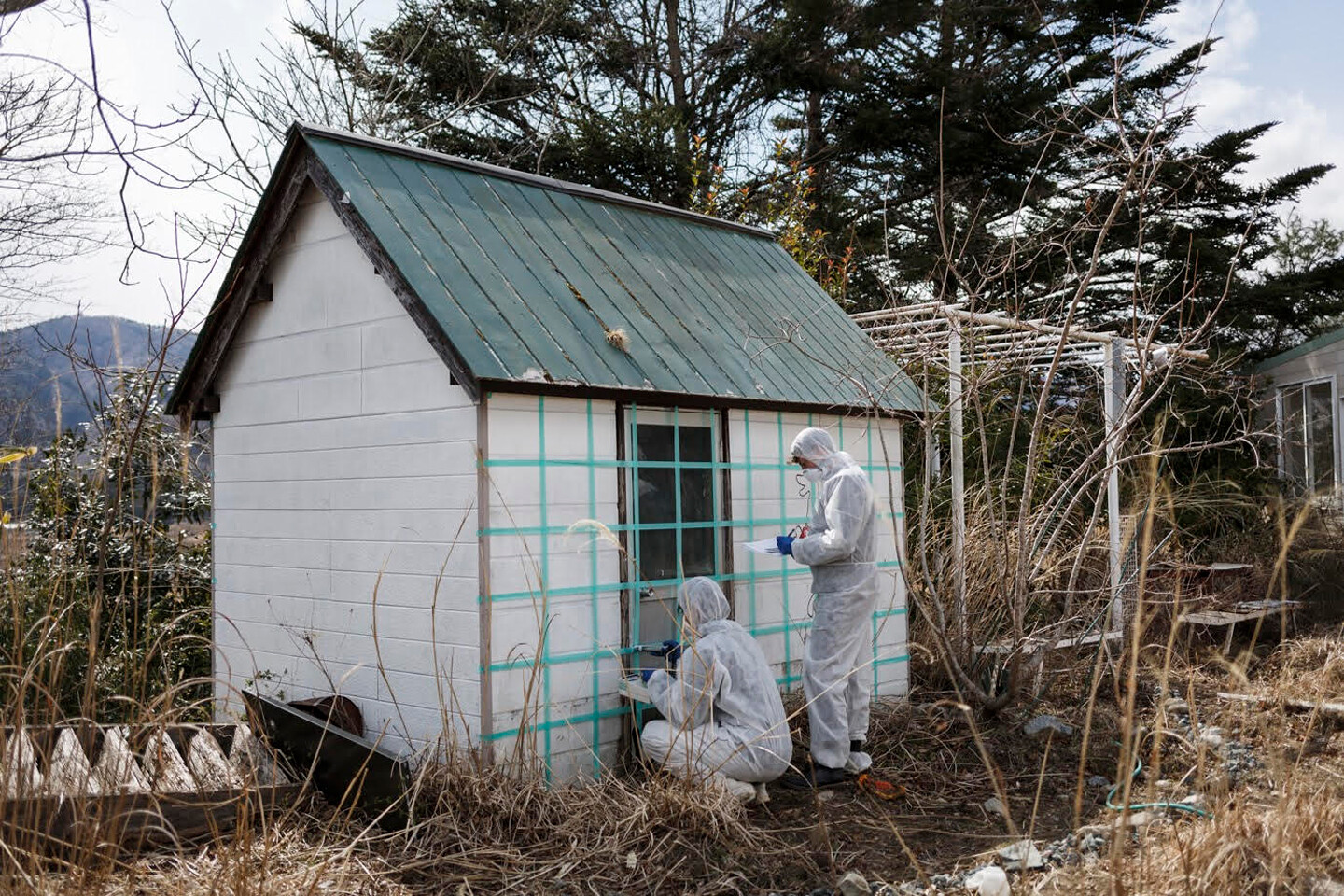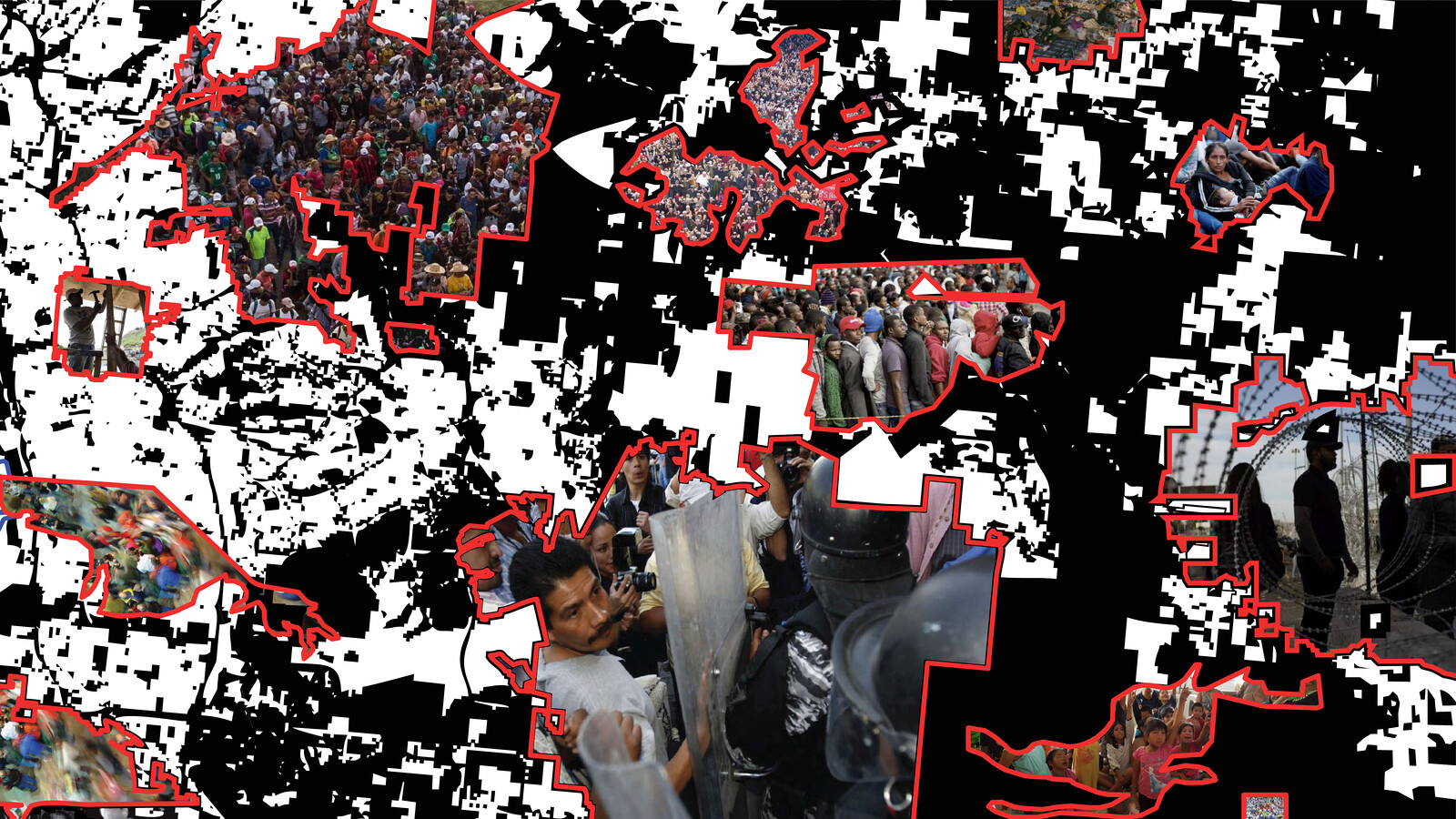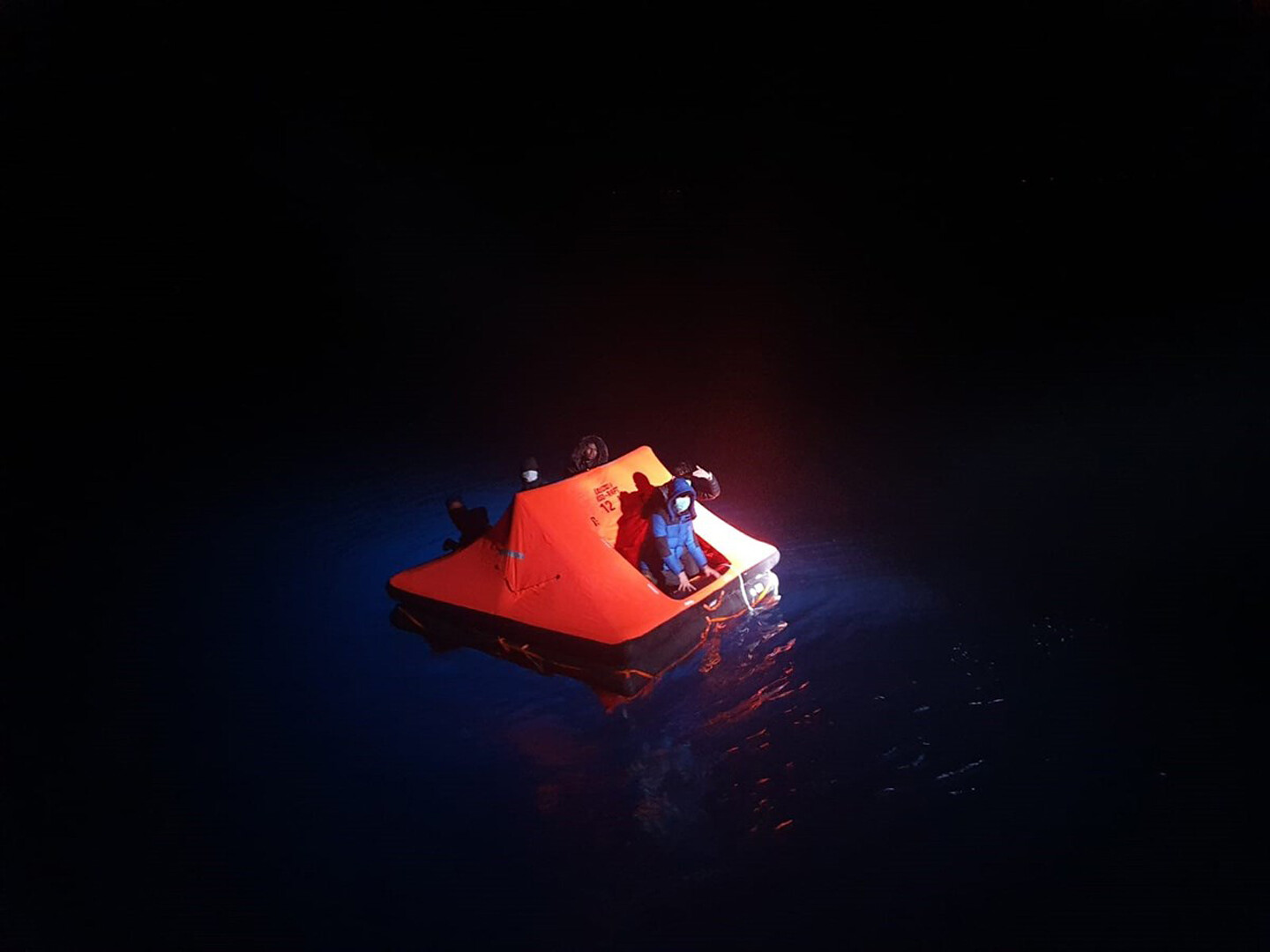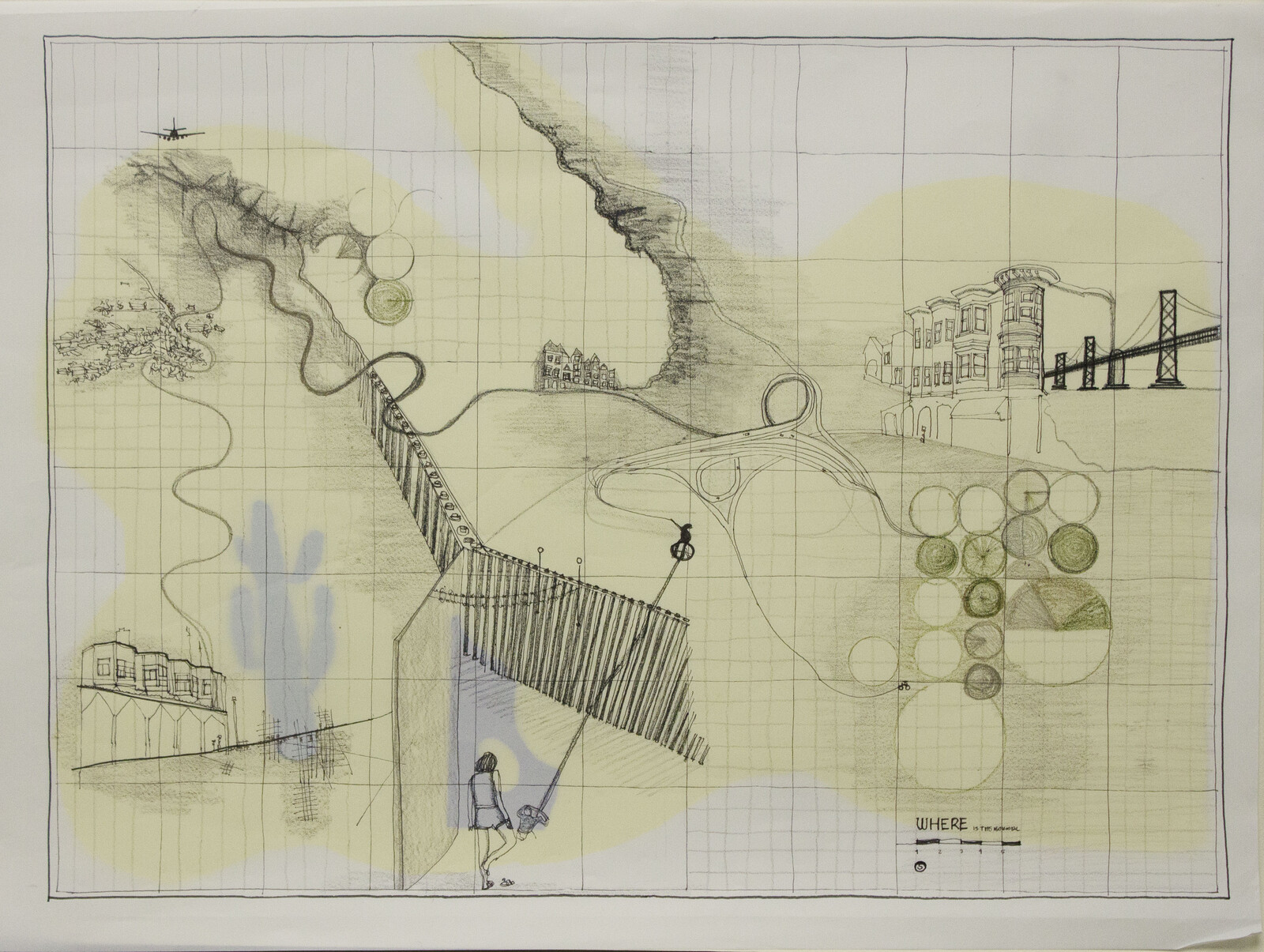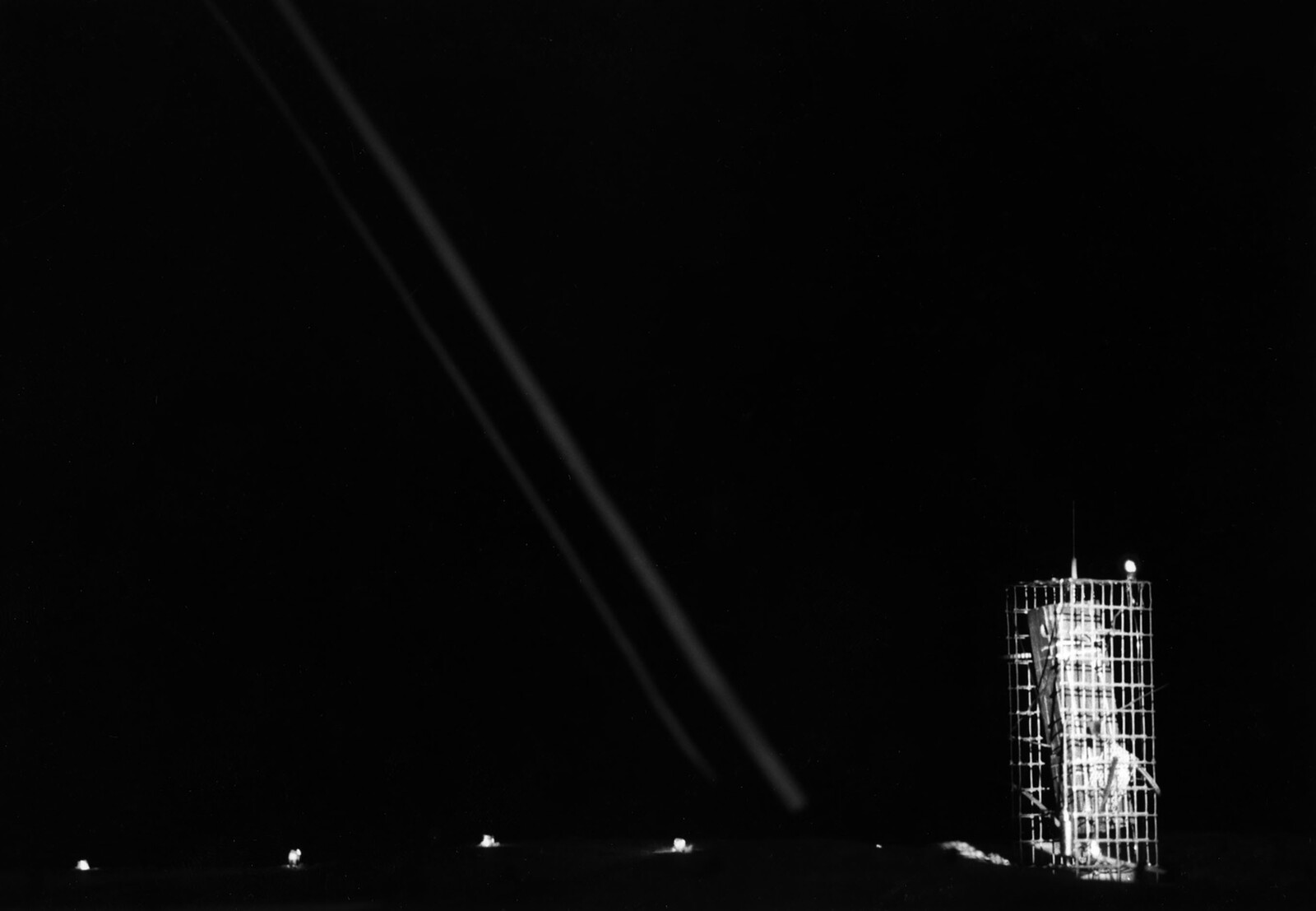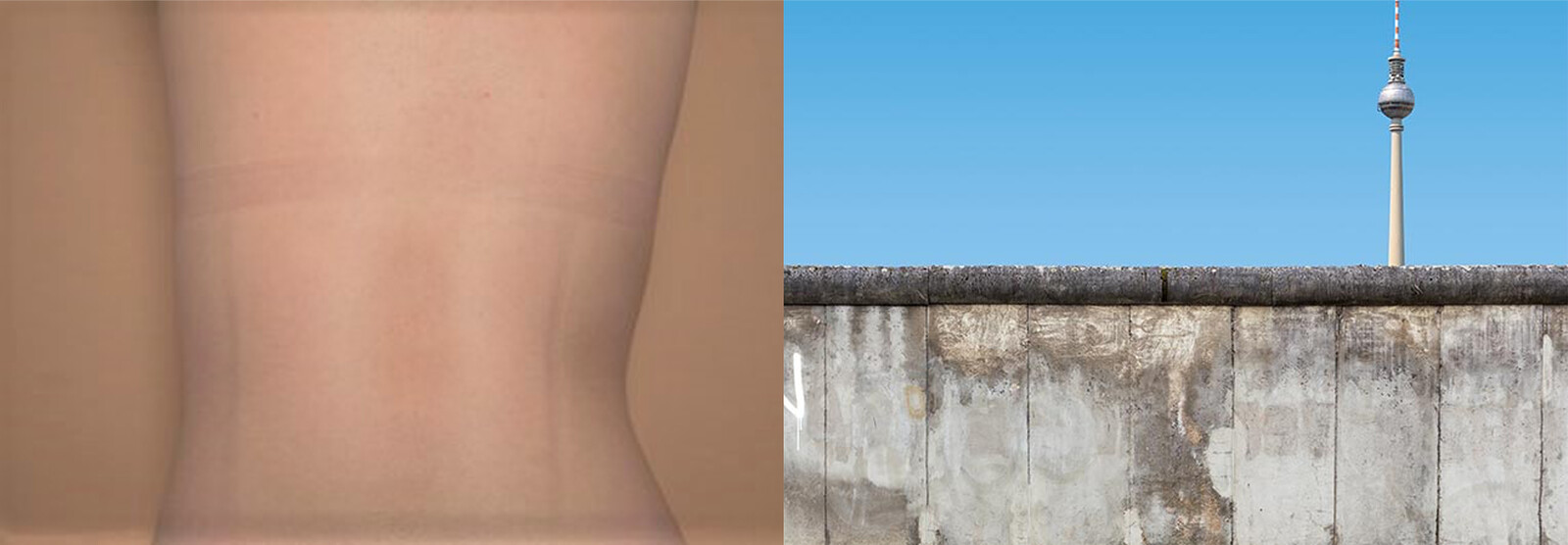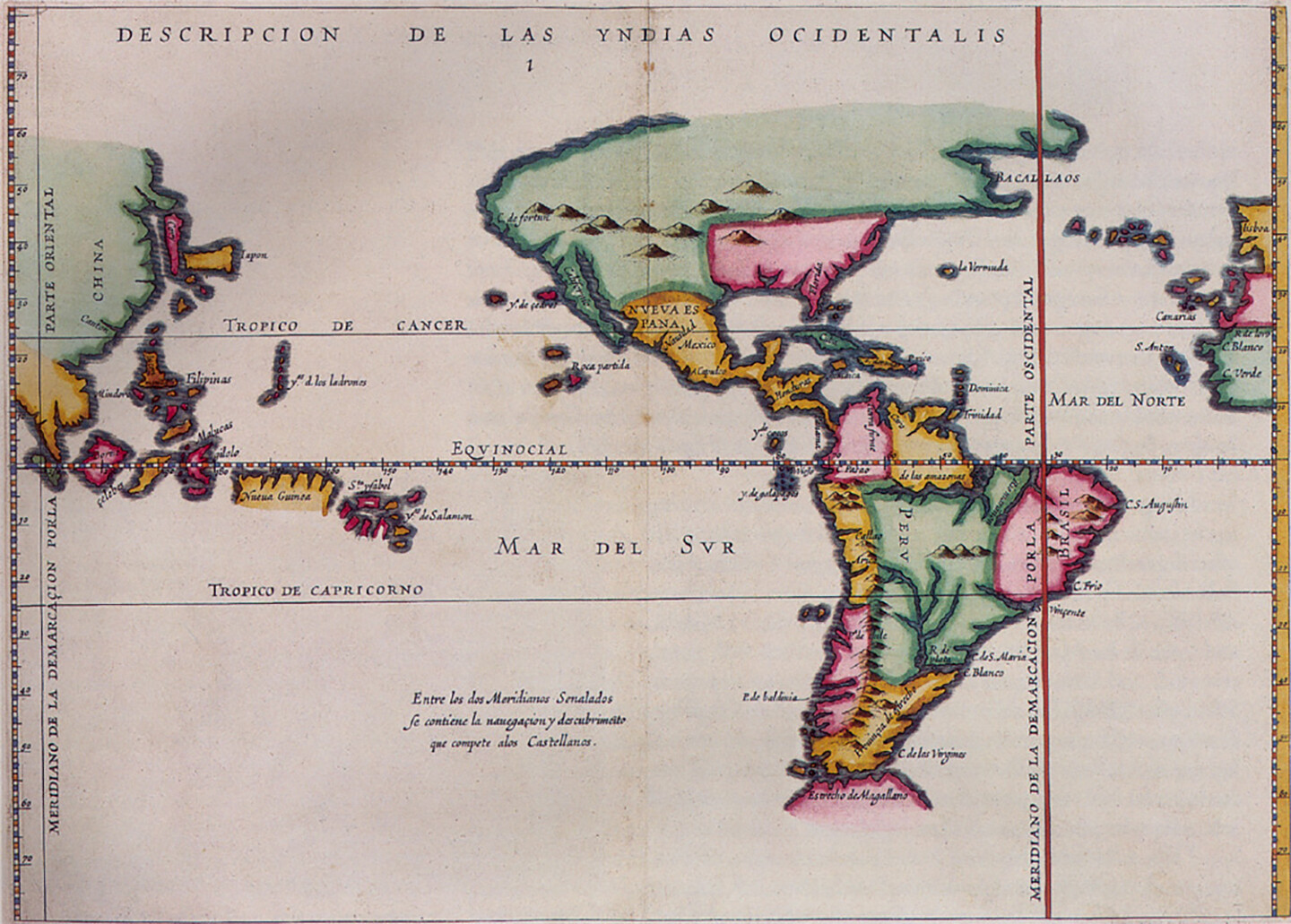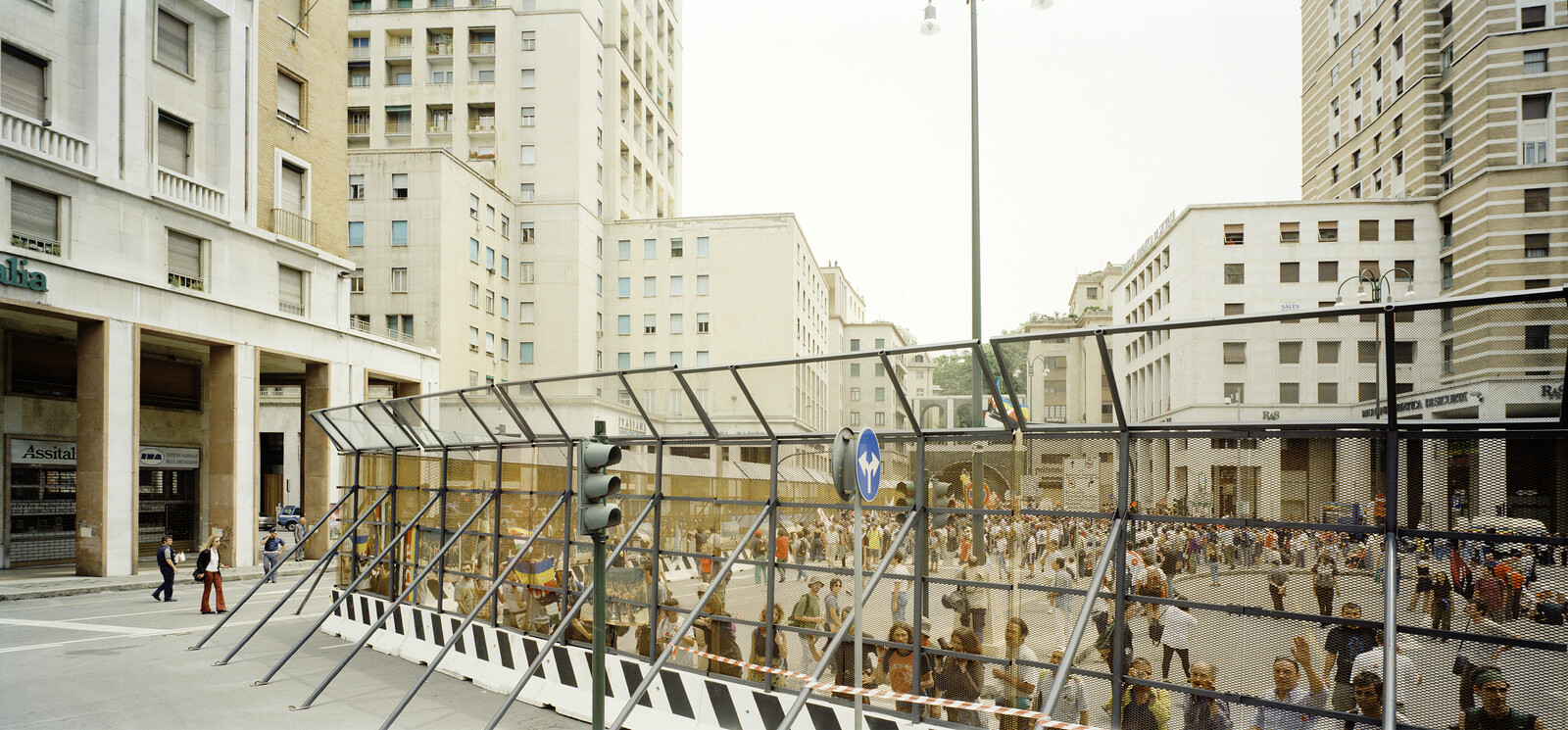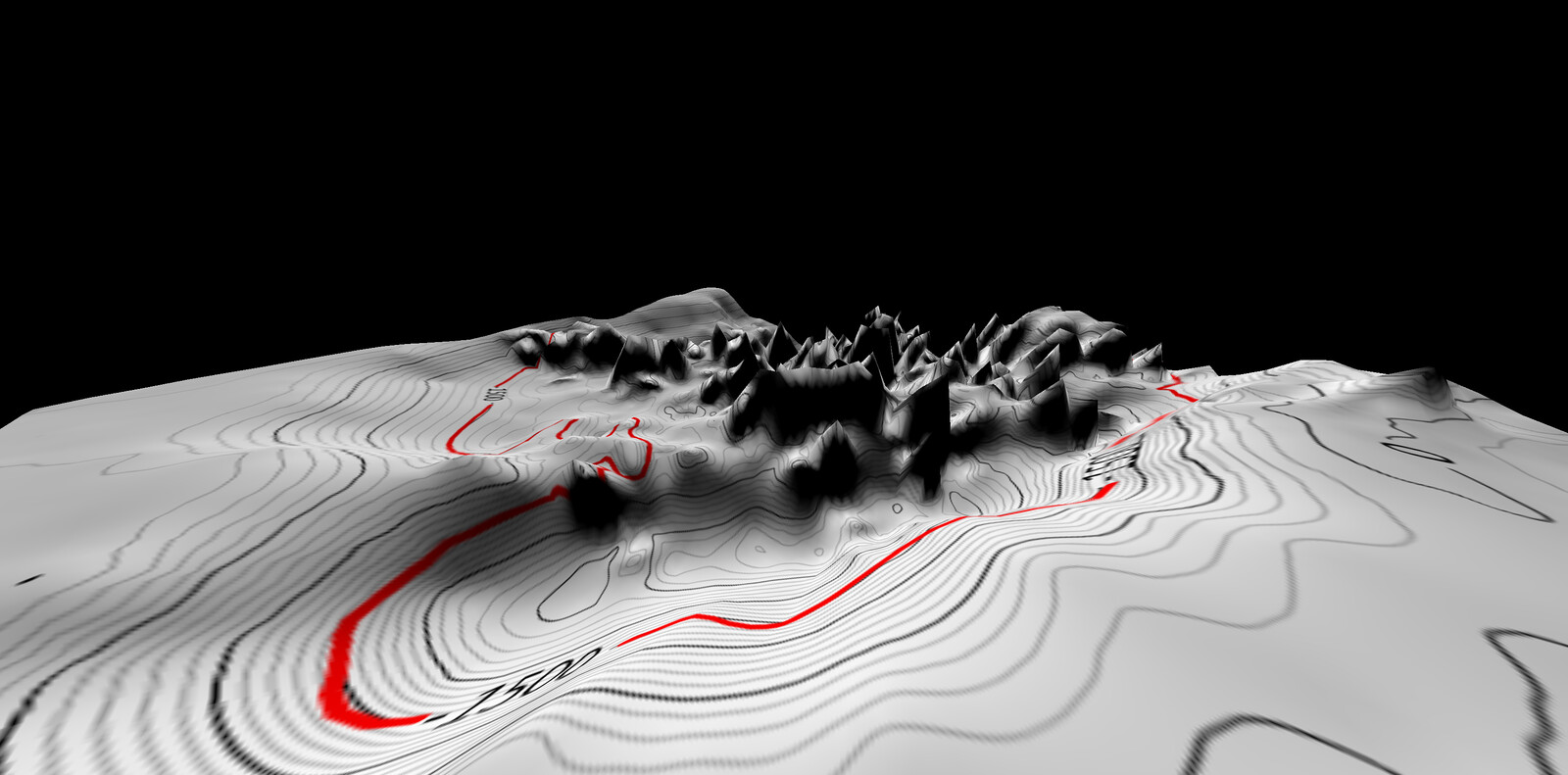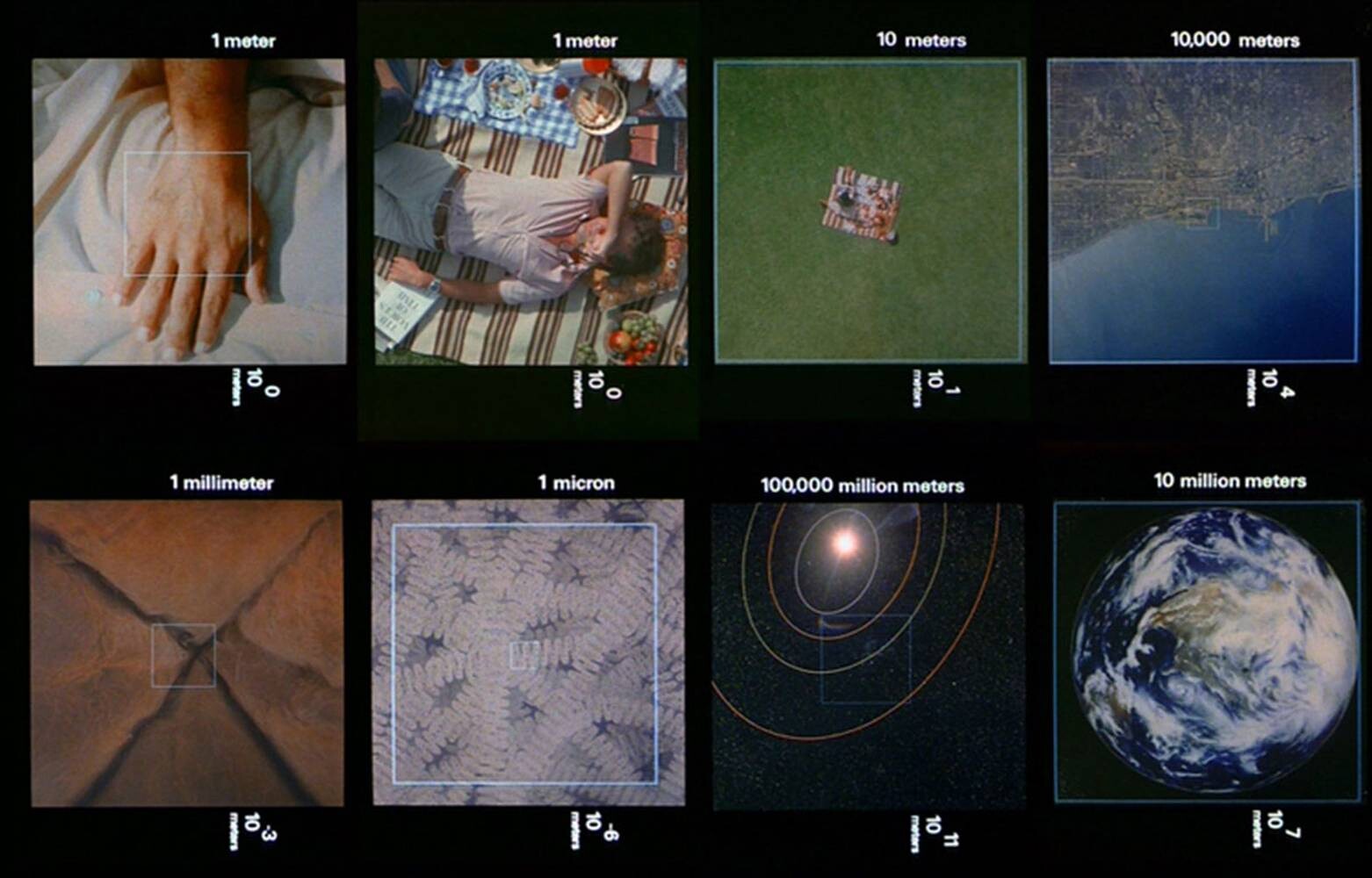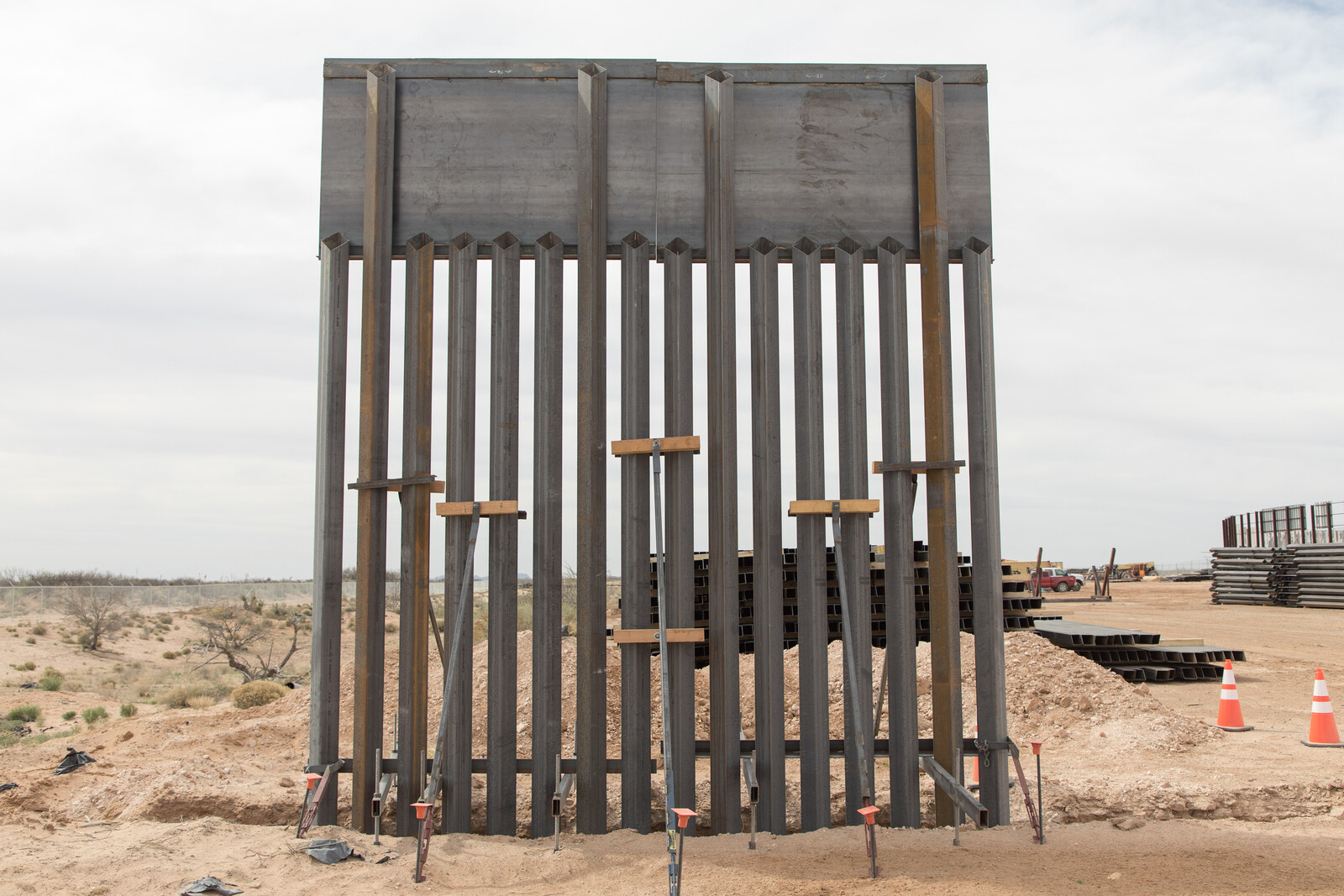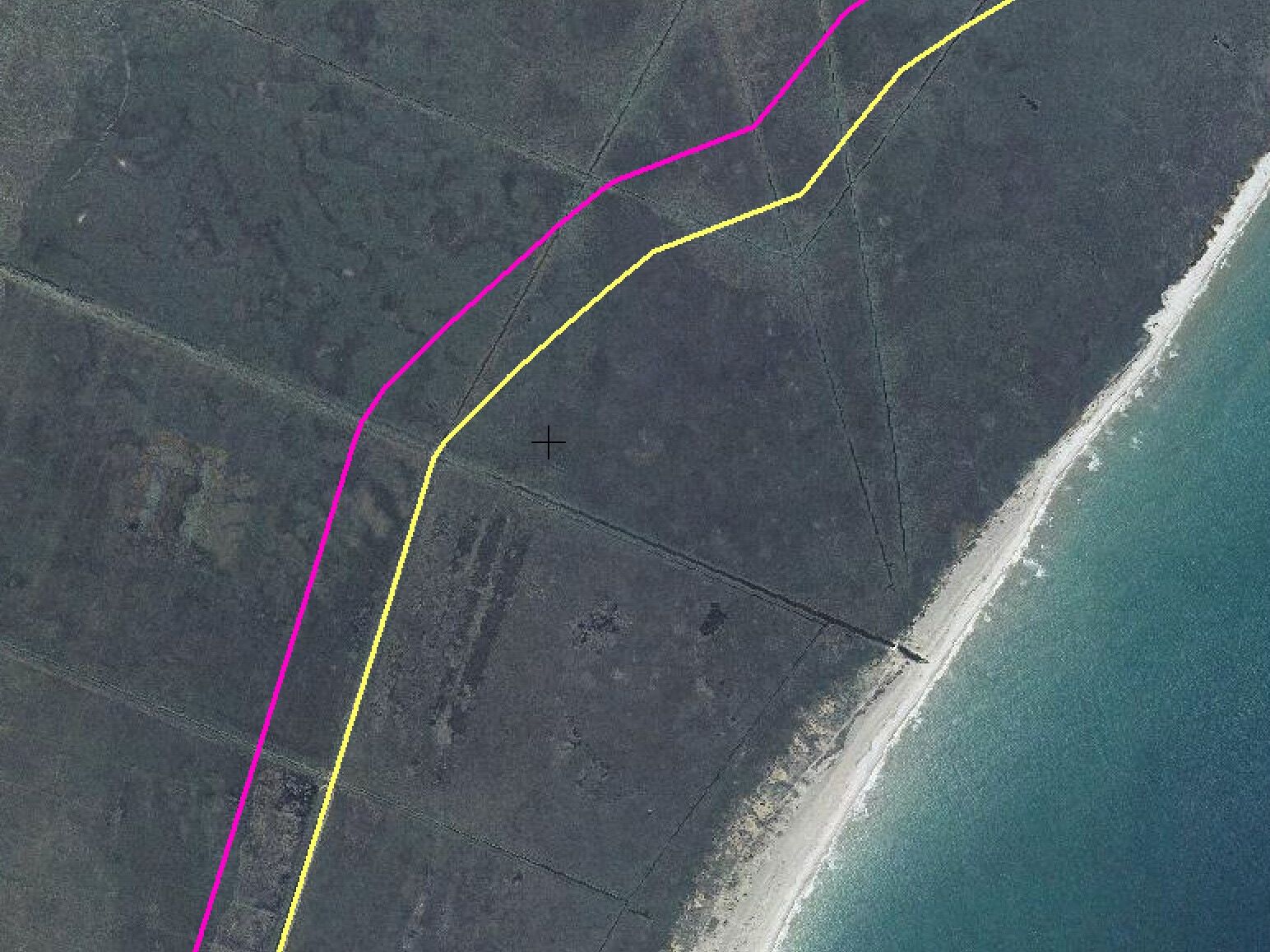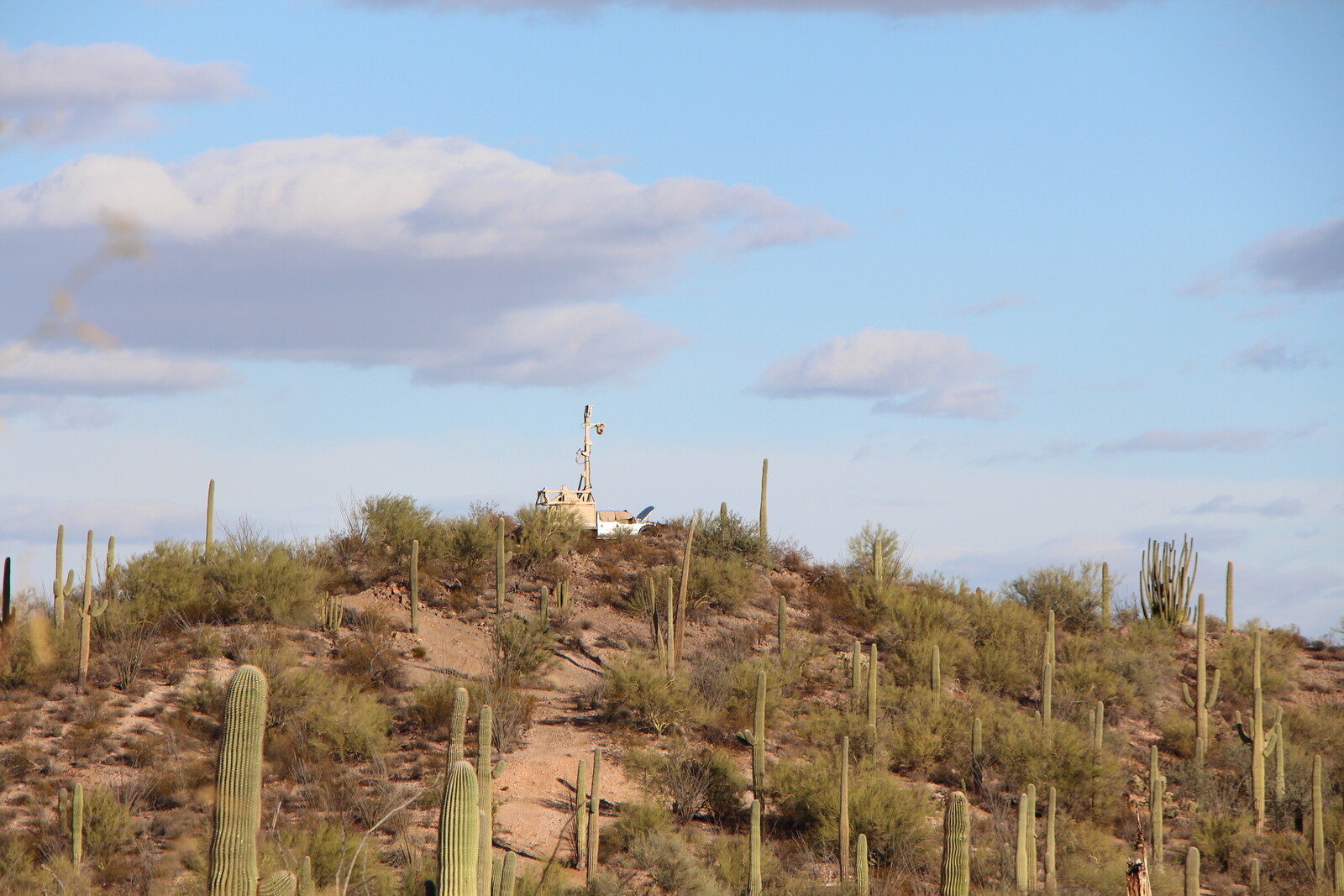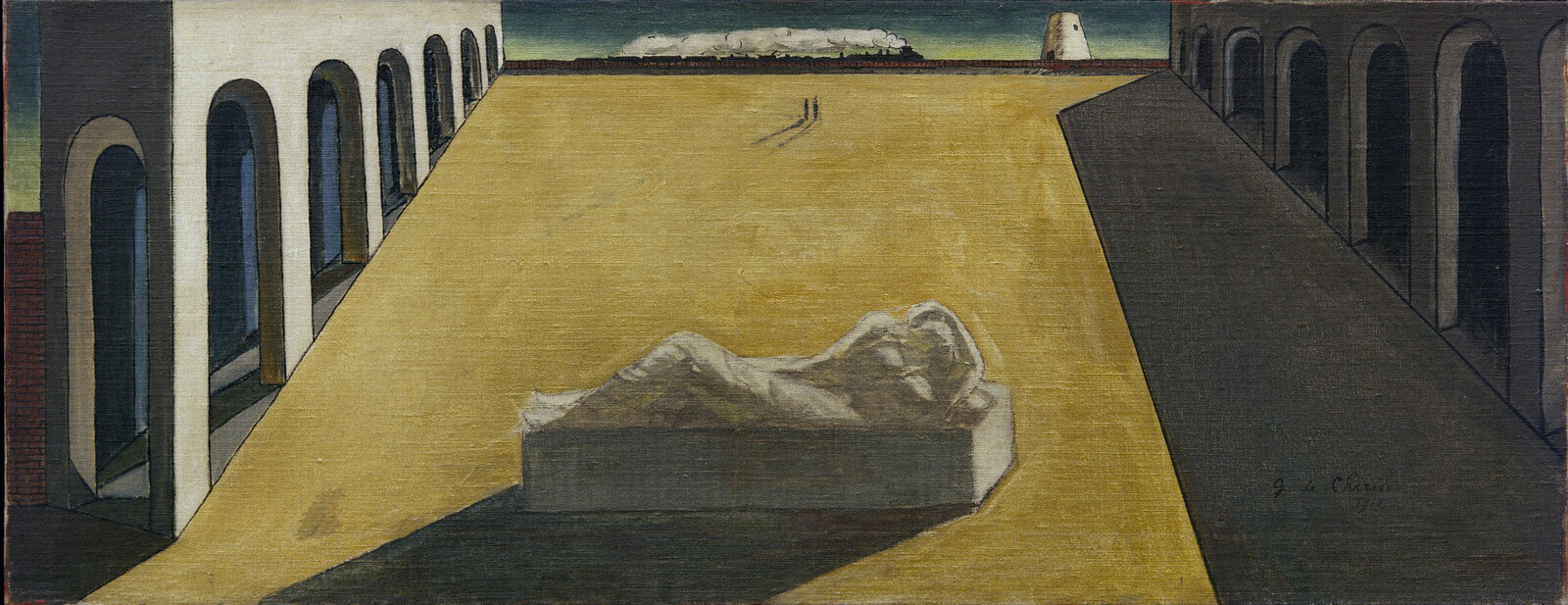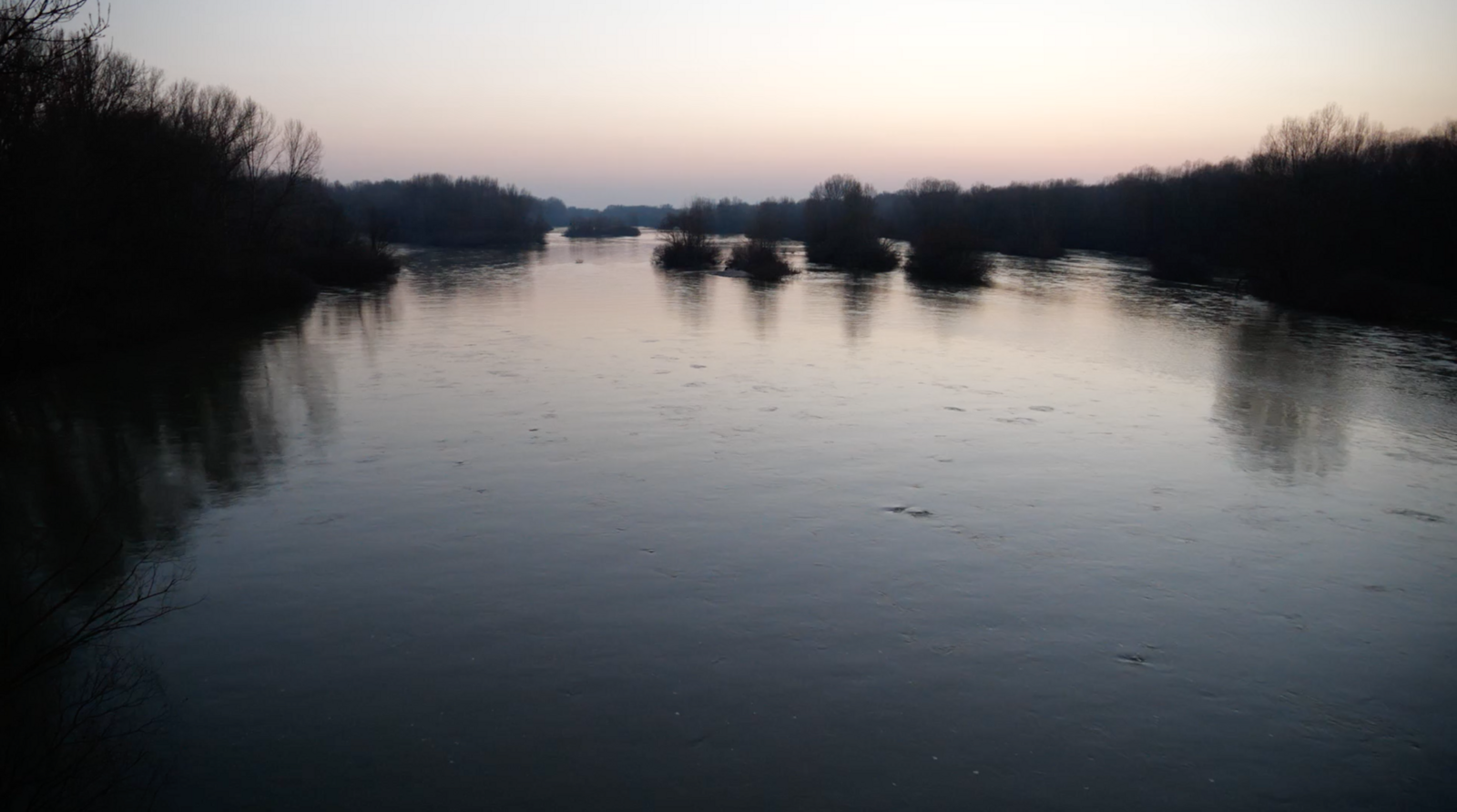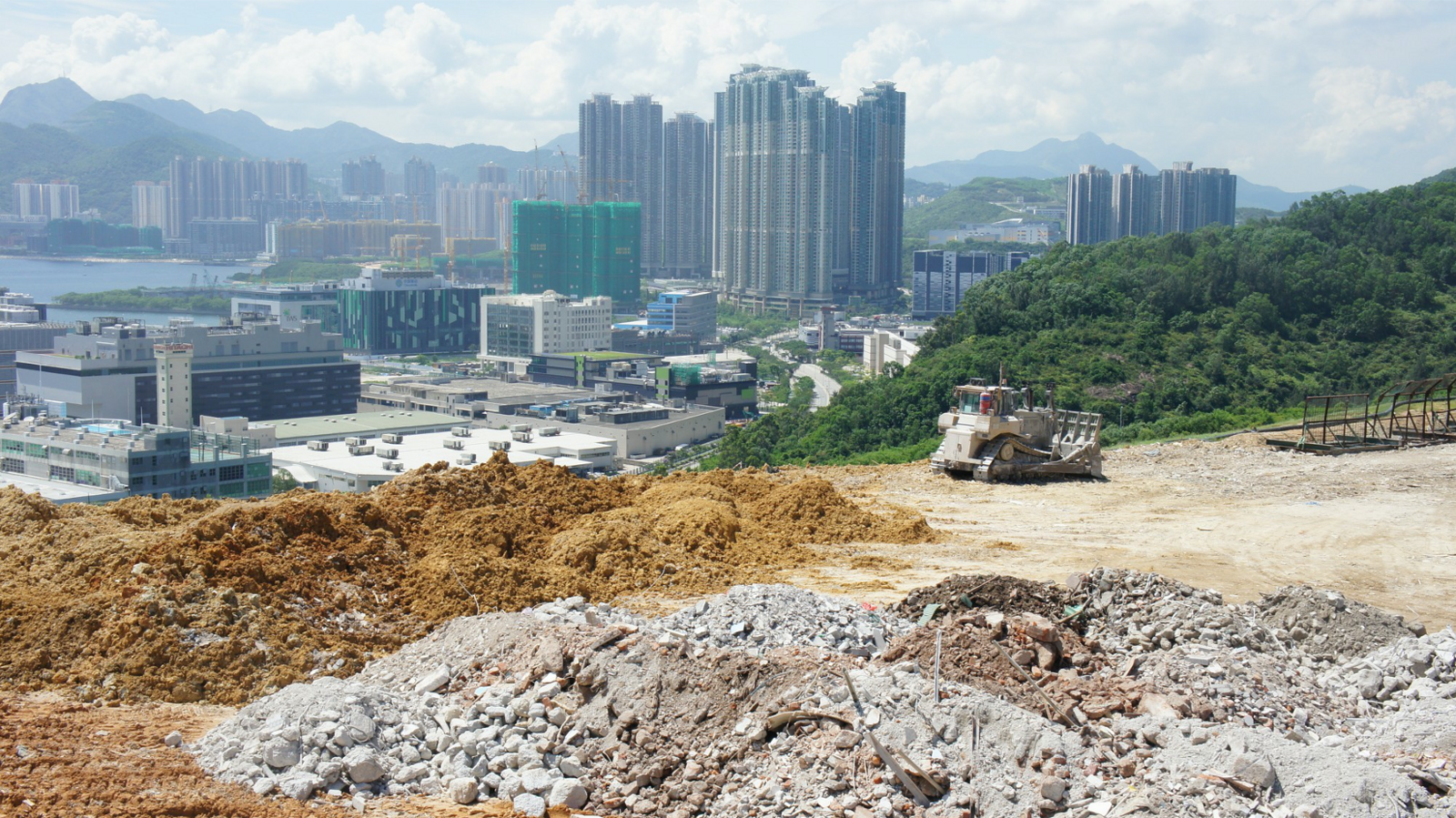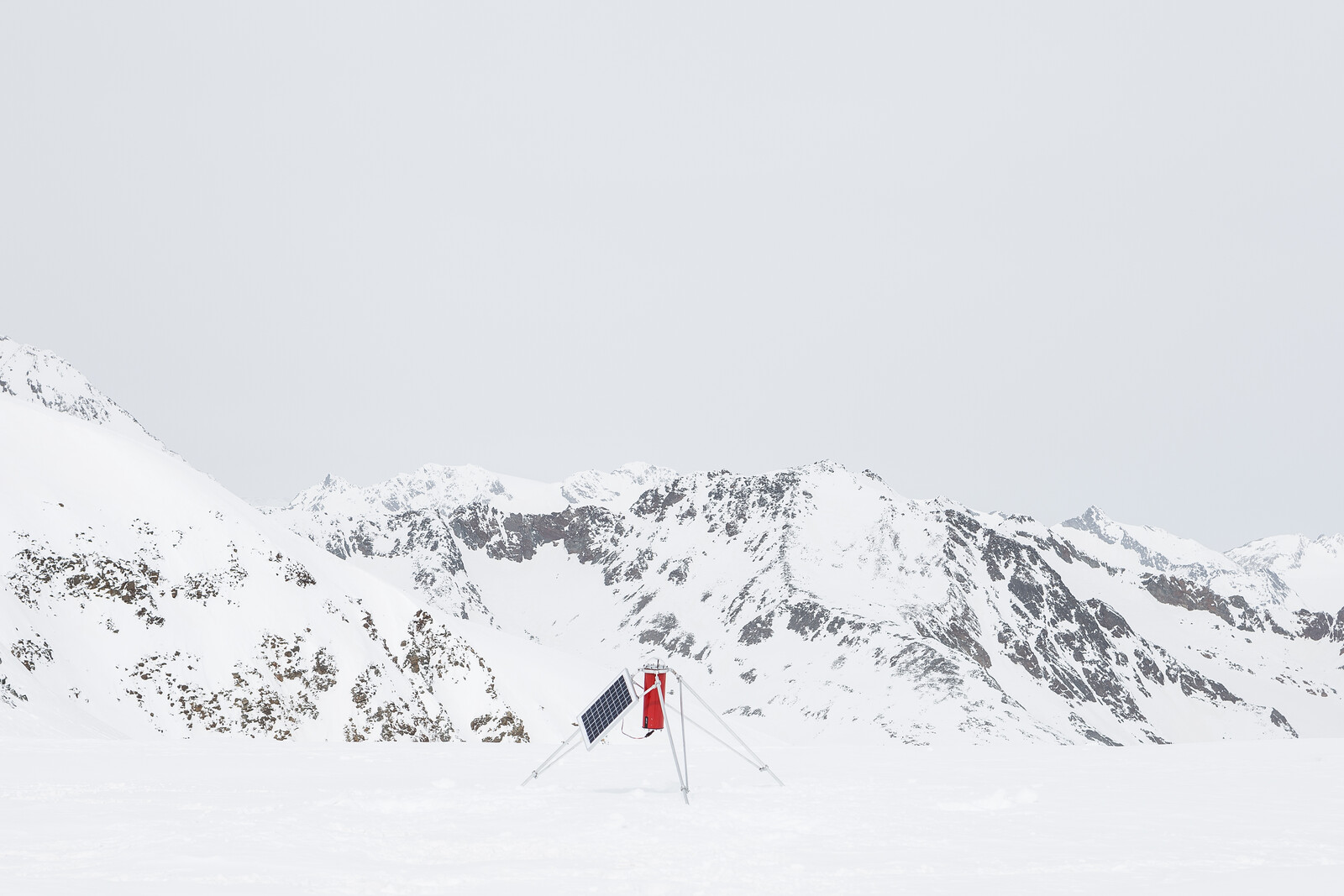Jostling around our necks, the dosimeters flashed their readings and the ticking of the handheld geiger counter spasmed sporadically in alarm. We were bumping through the overgrown field behind reactor six, built by General Electric at the Fukushima Daiichi Nuclear Power Station, on an old bus with plastic taped over the seats, with a Tokyo Electric Power Company (TEPCO) guide shouting over the struggling engine. In his process of describing TEPCO’s storage for the daily accumulation of large amounts of contaminated water used to cool the melted down reactors that leak into the broken infrastructure at the plant, the portable PA system broke. Neither the public relations manager nor his assistant could fix it, and there was no backup system available. The significance of this glitch was magnified when the bus stopped in the field alongside a small electricity transmission tower that lay slumped and twisted in the grass. This precarious tower was part of the system to supply electricity into the power plant to keep the reactors stable when the normal systems malfunctioned. When the earthquake shut down power production at the plant and felled this small tower, it stopped the external power supply, and along with the subsequent swamping of the back-up generators by seawater from an ensuing tsunami, these tiny glitches added up to the largest nuclear catastrophe in history.1 The blame, however, does not lie with the crumpled metal and salted couplings, but rather, as the independent commission verified, the fault was a result of human error and the failure of imagination—a lack of contingency for contingency.2
Fukushima was not a disaster. When the plant lost electricity for an extended period of time and the earthquake destroyed the surrounding area, making it difficult to marshal resources, the Japanese prime minister and his cabinet pulled out the emergency guide for what to do in a nuclear disaster, flipped through the entire book, and found no mention of prolonged power outages. The guidelines had been developed in close relationship with the nuclear industry and government agencies who had only considered the danger of “short term” power outages. It had always considered calamity in a vacuum. Power—in this case the combination of capital and state—never took systemic risk into account. They conceived any nuclear event that might occur would do so without large-scale disruption to society, and therefore believed any contingency plan could rely on immediate support from the surrounding area.3 Their’s was a disaster mentality.
Etymologically, “disaster,” meaning “ill-starred,” purports the notion of a chance disruption. What happened at Fukushima was not just an aberration in the system. It was not a chance disruption of an apparatus that could then be mended, simply folding the disruption back into its workings. Rather, what happened in Fukushima obliterated the framework itself.
Project introduction, March 11, 2020. Courtesy of Don’t Follow the Wind.
Part of a military-industrial complex that descended from the Manhattan project, Fukushima Daiichi had a built-in destructive capacity. The site selected for the plant was on a bluff next to the Pacific Ocean that had a former WWII airbase used to train Kamikaze pilots. This nationalist necropolitics extended into corporate extractivism when Tokyo Electric Power Company dramatically lowered the rocky plateau, which would have a been a natural barrier against tsunami, in order to save money on the transportation of material and lower operating costs. This made the site and surrounding communities more precarious. In addition, none of the electricity produced at the plant went to the local community, but was rather sent south to Tokyo part of internal colonial relationship between the metropolis and Fukushima.
The fragile notion of nuclear safety propagated by the industry and the central government was a framework of thinking formed around a temporal myopia and an almost religious belief in acceptable risk, known in Japan as the “safety myth.” This ideology produced the limited contingencies for isolated disasters, the veneer of safety that allowed the industry to be profitable. Acknowledging the possibility of large-scale risk would expose the cracks and deep fissures in this belief and force an acknowledgement of ontological instability of the “safety myth.” The actual preparation for contingency in these precarious times with climate only growing more violent would dramatically reduce profits—or if a “clean up” after nuclear contamination is taken into account, erase them entirely. In Fukushima, it was this abdication of contingency—imagining a future—that wrought total catastrophe.
While “disaster” is related to degrees of chance and outlying phenomena, the etymological root of “catastrophe” lies in a complete overturning, a reversal of what was expected—a paradigm shift. Fukushima superseded contingency to lay bare the fragility of the underlying order. By overturning what was conceived of as feasible, it opened up the necessity for a new modality of life.
Entropic Silence
On the bus tour, the amplification of the guide’s voice ceased, indicative of another symptomatic silencing that has been multiplying in its effects since the catastrophe took place. The radiation fallout left towns, fields, mountains, and bodies of water contaminated, rendering them uninhabitable. Approximately 100,000 residents were forcibly displaced and a large swathe of ground was rendered a type of no-entry nuclear reserve. The fallout had produced a quieting of the land. This is the sonic landscape of the failure of modernity: a chain reaction of neoliberalism that in its wake produced an immobilizing void of sound. An entropic silence that expands, deterritorializing as it descends, exhuming stillness, piercing the everyday acoustic sphere and draining it of vitality.
Symptoms of this entropic silence abound. In 2010, Japan ranked eleventh in the world in media freedom. Since the disaster, a concerted project of government intimidation, corporate, and self-censorship has created a repressive climate for speech and tumbled Japan down on the media freedom list to sixty-seventh, between Niger and Malawi.4
In 2016, standing in an alley in Seoul, a thin activist with a quiet fortitude from Saitama—a neighboring prefecture of Fukushima—shares the story of his father’s death following March 11, 2011 from a type of cancer that was predominate in Belarus after Chernobyl. His family was divided about whether to go through the arduous process of suing TEPCO, as cases have been difficult to substantiate in their singularity, the process is complicated, and there are no clear standards determining what deaths relate to the catastrophe.5 The growing aggregate of these related deaths provides a glimmer of the effects of the catastrophe not limited by prefecture or proximity. The entropic silence knows no boundary.
Raging against this silence, Hamako Watanabe, an elderly resident of rural Yamakiya, Fukushima, was forced with her husband to evacuate to a cramped apartment in Fukushima City and increasingly found herself in turmoil over her separation from her home and land. When she was allowed to return to her contaminated home for a short visit, she sat in her garden under a cherry tree, dosing herself with petrol. Undertaking an act of self-immolation in an attempt to halt the advance of the silence, she burnt herself and the contaminated air rather than breathing it. In the subsequent trial, this became the first suicide juridically deemed a direct result of the nuclear catastrophe, and TEPCO was forced to pay compensation to her family. The symbolic nature of this simultaneously desperate and defiant act forced an acknowledgement of the emotional burden that accompanies the physical contamination and displacement.6
Privatizing Sovereignty
Wherever the radioactive isotopes landed, the Tokyo Electric Power Company, in effect, became responsible for the local welfare, providing affected individuals with monthly compensation for those forcibly displaced and compensation for the loss of their homes and jobs. While the welfare of a population is usually the concern of the state, here the contamination effectively produced an amalgamated territory of private dominion. Radioactive nuclides fused with atoms of capital. This contamination set in motion a dual process of community privation and the privatization of individual well-being. Similar processes can be seen with fracking, which injects huge quantities of chemicals into the earth that can mix with oil or gas and seep into the groundwater, rendering local water supplies toxic. In these circumstances, communities have lost their only source of water, and in certain cases where the company has been found liable, the naturally existing subsurface water supply and its infrastructure has been replaced with a privatized subsidy system of water that is trucked in. With the expropriation of a basic resource, a precarious delivery mechanism is left in its wake to reproduce a structure for everyday life.7
The reliance on largely a single company (TEPCO), and the government to dictate the terms as well as the timeline for one’s future, has caused widespread anxiety in the region. Wherever capital-infused nuclides landed, they have spawned distress and mental illness. One forcibly displaced resident of Fukushima, in hours of interviews with the artist Meiro Koizumi, spoke of his sleepless nights of uncertainty and anxiety about having no agency over his future.8 Asked to imagine his first dinner with his family on his future return home, the former resident’s tale of an idyllic scene with the familiar taste of food is haunted by doubts and conflicting desires as to what his return will mean. Even in his imaginary account, the family decides that they will leave the home that they had just settled back into. Contamination and the fragmenting of the communities forecloses a nostalgic notion of “return.”
In December 2018, residents were given three months to decide whether they wanted their homes and building demolished for free by the local government. If not, residents would be responsible for any future costs. Without knowing when their homes might be accessible again or what the conditions of living in the area might be like, residents were asked to make a decision on an unprecedented, conflicted, and unknown future. He ultimately decided to destroy his home.
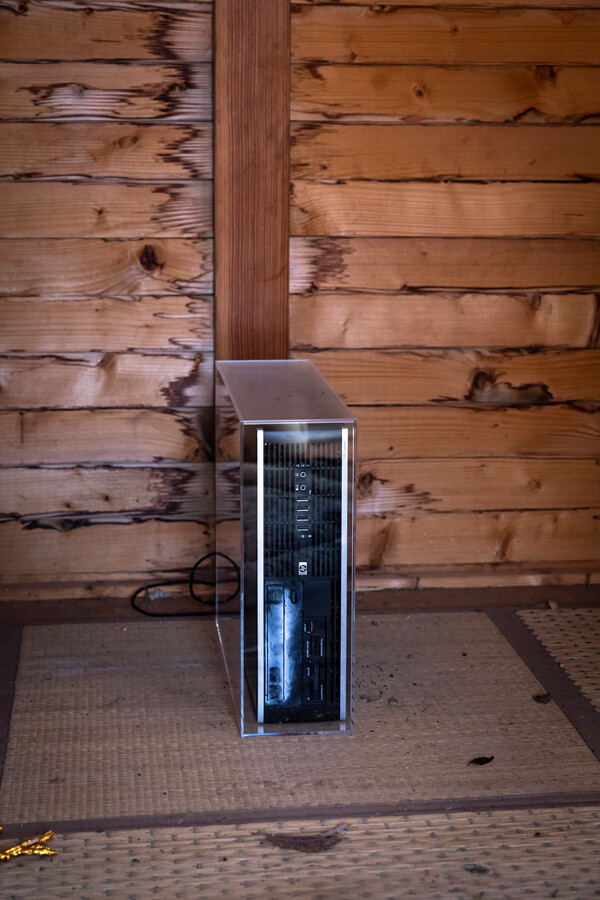

Taryn Simon, Final Photos, website, server, solar panel, battery, 2015–. Image courtesy of the artist and Don’t Follow the Wind.
These demolitions are changing the temporality of the built structures in the area. While the Fukushima exclusion zone held a diversity of historic and modern buildings, maintaining the continuity of life before the catastrophe that was “frozen” in time, this ongoing destruction is razing the area’s lived lineage. Wooden houses are replaced with empty gravel lots, and new buildings in the surrounding area—largely built in an inexpensive contemporary vernacular—are “cementing” the built landscape in a single moment of time. All of the buildings look relatively the same, erasing the deep history and evolution of homes and structures that reflected the generations of inhabitation.
The “clean up” program of TEPCO and the government entails the burning and transfer of some radioactive waste to temporary repositories in order to reduce contamination levels in affected communities. The “cleaned” areas of low-level radiation are then deemed safe for the former residents to return to by the local governments, even though questions have been raised about the long-term effects of low-level radiation on health.9 Many residents have made the difficult social and financial decision to live elsewhere. The one-in-ten who decide to return inhabit a largely vacant terrain outside of the zone and live with only fragments of the former social body left intact. Regardless of whether former residents return to their homes, compensation from TEPCO ceases only one year after the areas have been designated as “inhabitable.” Risk is therefore transferred onto the body of the resident, while their livelihoods become a liability wiped from the ledgers of the company.
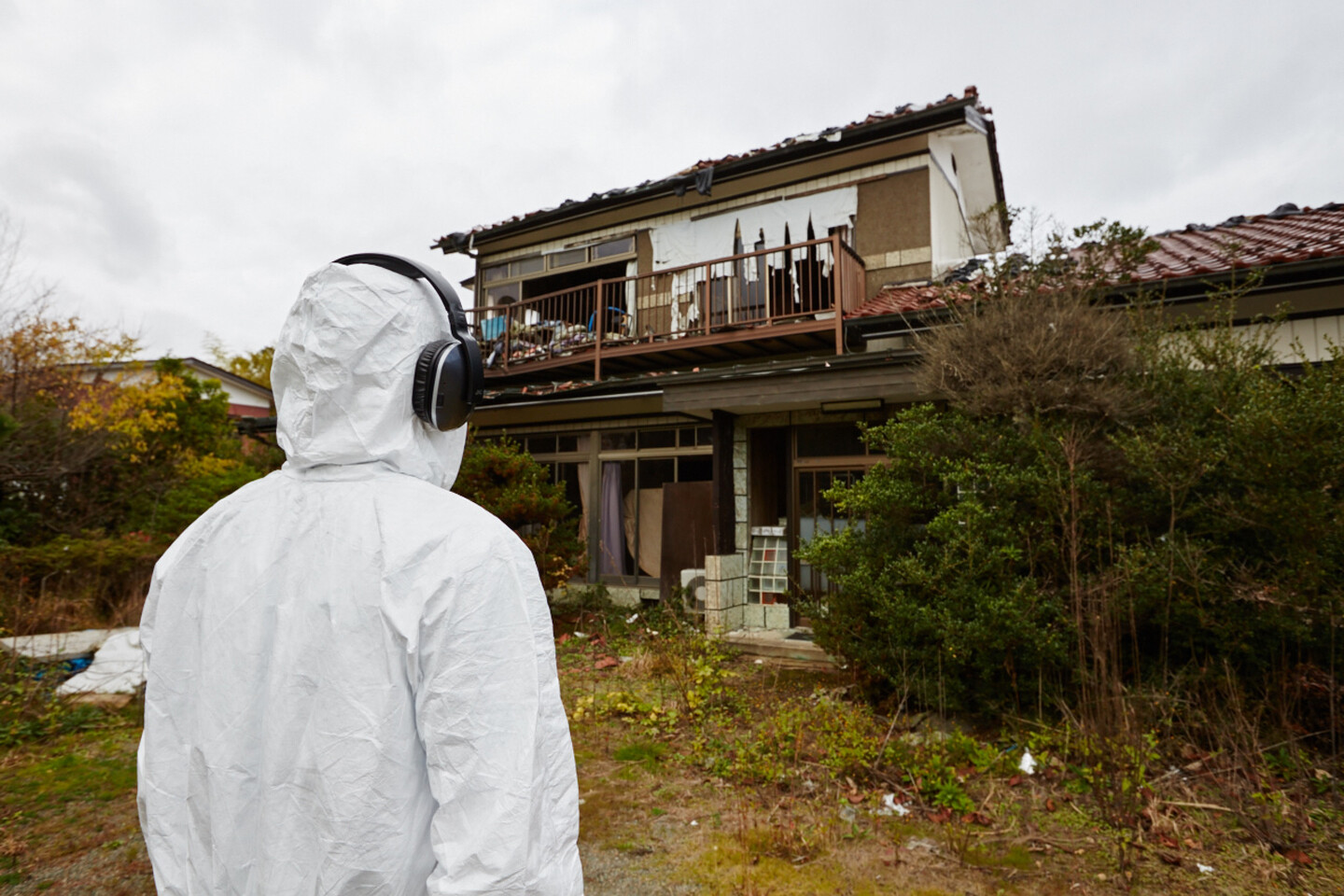

Meiro Koizumi, Home, sound installation, 2015. Image courtesy of the artist and Don’t Follow the Wind.
Negative Commons
In 2008, when landfills were overrun with the illegal dumping from across Europe and trash piles accumulated to the size of small hills in the city of Naples, neighborhoods slipped into disarray as medieval diseases returned. However, Silvia Federici notes that instead of waiting for the broken municipality to find a new repository for the excess trash, a negative commons emerged among the Neapolitan community.10 Neighbors exited their houses with shovels and began to work together, self-organizing garbage disposal and putting into place a basic infrastructure to confront the contamination.
The waste crisis traversed class relations as neighbors who had never met worked together to address this negative commons. Even after the waste was gone the bonds in the community persisted. The Fukushima disaster also had the unintended result of increasing the agency of local caregivers. Faced with a new contaminated reality, many parents and care workers in Fukushima and the surrounding area had to figure out how to protect the vulnerable, such as children, from the invisible force of radiation. In particular, many mothers who did not traditionally participate in politics were galvanized after March 11 and became important activists, speaking out to have the remaining nuclear plants shutdown and for a transparent assessment of the contamination.
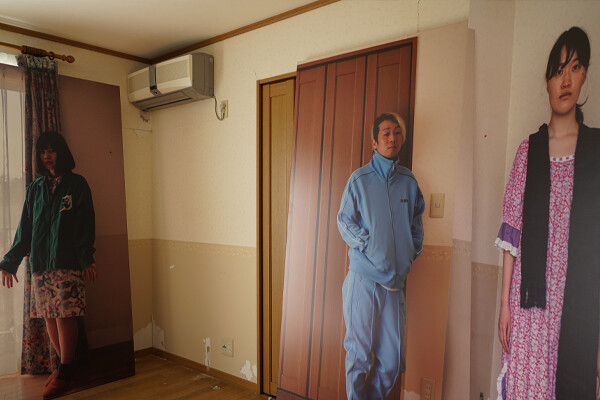

Kota Takeuchi, Time Travelers, installation, inkjet prints in a room in the Fukushima exclusion zone, 2015–. Image courtesy of the artist and Don’t Follow the Wind.
Though some people were displaced into towns just a few dozen kilometers from their homes, they were considered in those rural communities as different—either refugees or guests. This forced the host towns, with their traditional power structures, to encounter and negotiate with these newcomers and with ideas of difference. Mothers who were forcibly displaced began to quietly lobby officials and committees in their new towns to advocate for victims’ rights and push for information about contamination levels. Throughout the catastrophe, the activist work of caregivers has expanded and transformed tradition roles and expectations of gender in society.11 Care work has halted the entropic silence to mend the fracturing of communities, and has done so with loud demands for the co-construction of a very different future.
Beyond the family unit, care relations have also been instrumental in recombining the fragmented and scattered communities that remain. In a parking lot in Fukushima outside of the zone, hundreds of small prefab “temporary” container dwellings were constructed for those resident’s forcibly displaced who had nowhere else to go. Five years into the catastrophe, they still housed residents of Tomioka—one of seven towns that make up the area zone—who had been forcibly evicted from their contaminated homes. Those housed together did not necessarily know each other before entering the encampment. Many of the residents were older and did not have family or others who they could live with elsewhere in Japan, and therefore lost the immediate support networks that they had relied on in their neighborhoods.
We met with an eldercare nurse who had lost her job and home after the catastrophe who was relocated to the temporary dwellings. She set about to get know her new elderly neighbors, and with her ample time, began to transfer her professional care skills to the new community. Such self-organizing of informal care infrastructures both maintained the health of precarious bodies and began to weave a new texture of a community together. Despite the difficult living conditions, many elderly had begun to see the encampment as their home and the new bonds of friendship that had formed there as an indispensable part of their lives.
While these examples of care should not be read as a form of permission for prevailing structures and their failures to forgo their basic responsibilities, what becomes evident in the aftermath of Fukushima is that an emerging collectivity has formed around mutual aid and bonds of communal care that transcended the catastrophe. In the new world which has opened up for those living in Fukushima, forms of agency are not given but rather self-produced. If a shattered sovereignty is returning to Fukushima, in those fractures is evidence that different forms of life and self-organization are emerging with deeper roots and unknown possibilities.
A comprehensive, concise account of the events surrounding the meltdowns at Fukushima Daiichi Nuclear Power Plant as well as a survey of the conditions leading up to disaster can be found in The Independent Investigation Commission on the Fukushima Nuclear Accident, The Fukushima Daiichi Nuclear Power Station Disaster: Investigating the Myth and Reality (London: Routledge, 2014). A more technical history can be found in IAEA Director General, The Fukushima Daiichi Accident (Vienna: International Atomic Energy Agency, 2015).
The Independent Investigation Commission on the Fukushima Nuclear Accident, The Fukushima Daiichi Nuclear Power Station Disaster, xviii.
Ibid., 2–3.
Reporters Without Borders, “2019 World Press Freedom Index,” ➝.
A full account of Hamako Watanabe’s suicide can be read in Mark Willacy, Fukushima, (Sydney: Pan Macmillan, 2013); and the subsequent court judgement “Fukushima Suicide Victim’s Family Wins Damages,” The Guardian, August 26, 2014, ➝.
Eliza Griswold, “The Fracturing of Pennsylvania,” New York Times, November 16, 2011, ➝.
From Meiro Koizumi, Home (2015), where the artist interviewed a former resident collaborating on the project on multiple occasions for over fifteen hours inside his present temporary residence and former contaminated home. The resulting three-minute sound work results from a prompt from the artist to the former resident to imagine the first dinner he would have on returning to his previous house. Home is installed as an audio track playing in headsets in the resident’s inaccessible home in the exclusion zone, waiting for the residents and public to be able to return. The work was developed as a part of Don’t Follow the Wind (2015–ongoing) a long-term collective project taking place at site inside the Fukushima exclusion zone that are loaned by the forcibly displaced residents.
In 2015, the first large-scale long-term study of the effects of low-level radiation have shown an increased risk in leukemia was published. Klervi Leuraud, et al., “Ionising radiation and risk of death from leukemia and lymphoma in radiation-monitored workers (INWORKS): an international cohort study,” Lancet Haematol 2 (2015): e276–281.
Silvia Federici, “Women, Reproduction, and the Construction of Commons,” lecture, Museum of Art and Design, New York, April 18, 2013, ➝.
Accounts of the relationship between care and agency in affected mothers in Fukushima are taken from research by David Slater, Haruka Danzuka, and Satsuki Uno related to the oral history archive Voices of Tohoku, presented at “Radical Distances: Fukushima and Okinawa,” organized by the author and Camp at Shine Shokudo, Tokyo, November 2, 2015.
At The Border is a collaboration between A/D/O and e-flux Architecture within the context of its 2019/2020 Research Program.
Category
Subject
This text is updated from an initial publication in Margarida Mendes, ed., Matter Fictions (Berlin: Sternberg Press, 2017), 115–124.
At The Border is a collaboration between A/D/O and e-flux Architecture within the context of its 2019/2020 Research Program.
